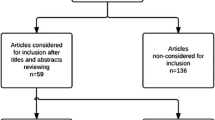Abstract.
Introduction: Laparoscopic splenectomy (LS) offers superior visualization and access to the spleen and avoids the major laparotomy incision necessary in open splenectomy (OS). This review summarizes the current knowledge of laparoscopic techniques for splenectomy from the perspective of surgeons whose combined experience now totals 340 cases. Background and discussion: While LS has been applied across the spectrum of splenic diseases, it is most indicated in treatment of a benign hematologic condition with a normal or slightly enlarged spleen as seen in autoimmune thrombocytopenic purpura (ITP), autoimmune deficiency syndrome-related ITP, hemolytic anemia, or spherocytosis. Both anterior and lateral approaches have been used for LS. While benefits of the anterior approach include access to the splenic artery along the superior border of the pancreas within the lesser sac, thus securing vascular control early in the procedure, the lateral approach allows for improved exposure of and access to the splenic pedicle. Also, mechanics and sequence of dissection are enhanced and more intuitive to the surgeon using the lateral approach, and the tail of the pancreas is more easily identified. Potential perioperative complications of LS include hemorrhage, injury to the tail of the pancreas, and deep vein thrombosis. The most common criticisms facing LS are the potential for missed accessory spleens, longer operating time, and greater operating room costs compared to OS. However, while LS requires a longer operating time than OS, studies indicate shorter postoperative hospital stays for LS versus OS patients in comparable cases, which can, in turn, reduce the total hospital cost for the procedure. Conclusion: Although LS continues to pose certain technical challenges – such as management of the massive spleen, specimen extraction, and identification of remotely located accessory spleens – its advantages over OS in terms of faster postoperative recovery, shorter hospital stay, and equivalent or lower perioperative morbidity are now well established. Indications for LS and more laparoscopic spleen-conserving surgery are likely to broaden.
Similar content being viewed by others
Author information
Authors and Affiliations
Additional information
Electronic Publication
Rights and permissions
About this article
Cite this article
Park, A., Targarona, E. & Trías, M. Laparoscopic surgery of the spleen: state of the art. Langenbeck's Arch Surg 386, 230–239 (2001). https://doi.org/10.1007/s004230100222
Received:
Accepted:
Published:
Issue Date:
DOI: https://doi.org/10.1007/s004230100222




